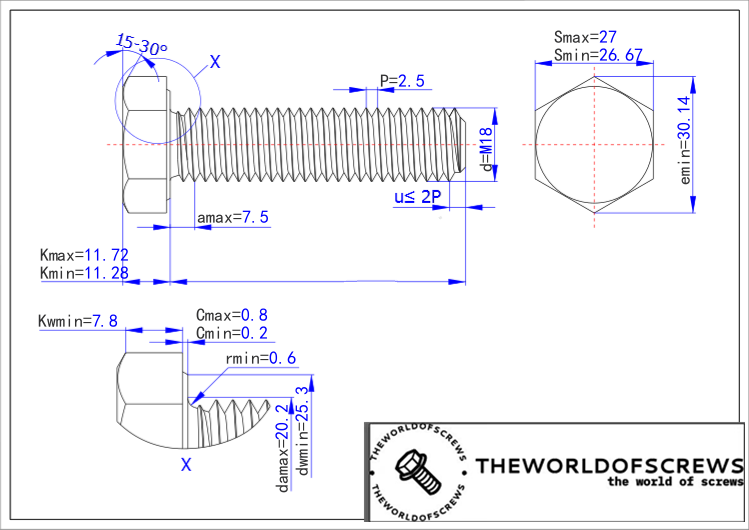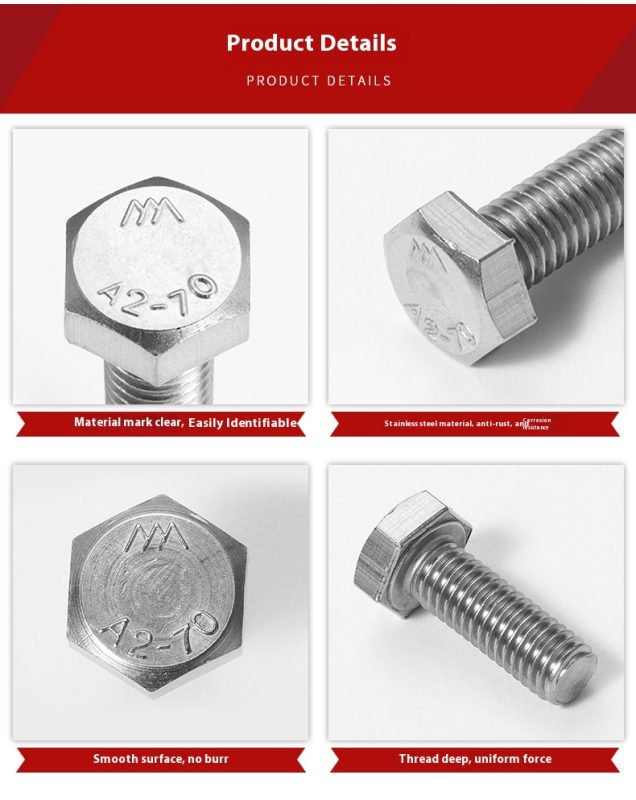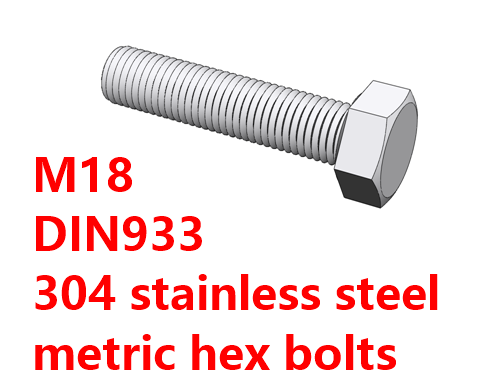DIN 933 Full Thread-A2-70
Stainless steel A2 hexagon bolts, commonly known as 304 stainless steel hexagon bolts, the most commonly used material for austenitic stainless steel A2-70, which means austenitic stainless steel group A2, tensile strength of 700MPa, austenitic stainless steel A2-70 has the following qualities.
(1) super corrosion resistance, stainless steel A.2 hexagonal bolts have resistance to air, water, acid, alkali salt or other corrosive media, often used in medical, chemical and other fields.
(2) The material structure is stable, at various temperatures can maintain its austenitic structure, no phase change.
(3)Non-magnetic, non-magnetic in normal state, slightly magnetic after cold working, the values of magnetic conductivity ur are as follows:A2: ur≈1.8, A4≈1.015, A4L≈1.005.
Technical Parameters


- The Pitch (P) is 2.5 mm.
- The Major or External Peak (amax) is 7.5 mm.
- The Minor or Internal Trough (rmin) is 0.6 mm.
- The Thread Angle ranges between 15 to 30 degrees.
- The Maximum Root Diameter (Kmax) is 11.72 mm.
- The Minimum Root Diameter (Kmin) is 11.28 mm.
- The Core Diameter (Kwin) is 7.8 mm.
- The Maximum Crest Diameter (Cmax) is 0.8 mm.
- The Minimum Crest Diameter (Cmin) is 0.2 mm.
- The Maximum Width Across Flats (Smax) is 27 mm.
- The Minimum Width Across Flats (Smin) is 26.67 mm.
- The Head Height (emin) is 30.14 mm.
Product Details

Precautions
1. Correct Product Selection
- Initially, confirm that the mechanical properties of the product meet customer requirements, such as the tensile strength of bolts and the safety load of nuts.
- Choose the bolt length so that 1-2 threads of the nut are exposed after tightening.
- Keep the product threads clean before use for optimal performance.
2. Proper Use of Fasteners
- When tightening, align the wrench force directly with the screw axis to avoid tilting.
- During tightening, do not exceed the safe torque and aim for a uniform application of force. It is advisable to use a torque wrench or socket.
- Avoid too fast locking speeds, which can cause jamming; manual tools are preferable over electric or pneumatic wrenches.
- Maintain thread cleanliness to ensure smooth screw and nut engagement. Store products in a clean container and avoid random placement.
3. Maintenance Standards
- If dismantled screws and nuts show slight damage, restore them using plate teeth and taps.
- After repairing, preserve screws and nuts by soaking in oil or applying lubricating oil, and organize them neatly by specifications and type.
4. Scrapping Standards
- Scrap any bolts that exhibit clear signs of damage such as obvious cracks, broken threads, jamming, misaligned threads, stretching deformation, or shear traces, particularly if field technicians cannot repair them.
These guidelines will ensure efficient and safe handling of fasteners throughout their lifecycle.


